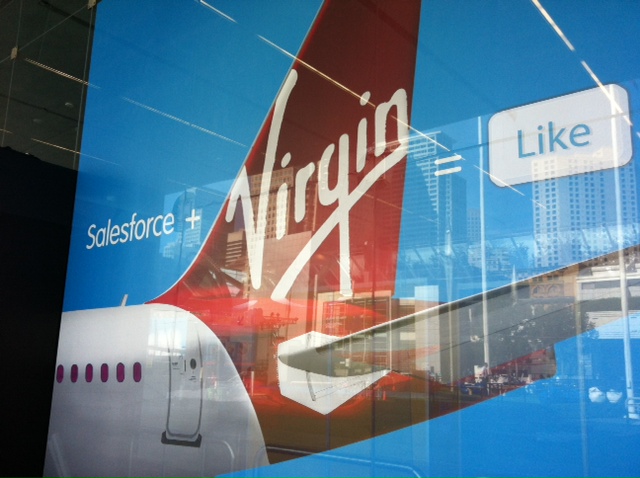“The problem with legacy businesses is legacy people” said David Cush, the CEO of Virgin America at the Dreamforce conference.
For many organisations this is indeed the problem; that managements, workforces and shareholders are locked into a way of doing business that has worked for them in the past, so when change arrives they are ill-equipped to deal with it.
One of the key take aways from the Dreamforce conference is that the rate of business change is accelerating as technologies like cloud computing and the Internet mature.
For the legacy businesses locked into old ways this means they are going backwards faster than they could imagine.
A good example of this is when Virgin America showed their vision of how customer service works in a connected, social world.
The problem for companies like United and the other legacy carriers with their older aircraft and lumbering IT systems is they simply don’t have the infrastructure to provide these services if they wanted to.
One of the characteristics of 1980s management thinking is under-investing in equipment. ‘working your assets’ by flogging them way past their replacement dates is a handy way to increase profits and management bonuses, but it leaves a business exposed when newer technologies come along.
That’s the problem the legacy businesses, whether they are airlines, banks, telcos or in any other sector. Those who are nimble and those who have invested in new systems can take advantage of the change.
For some of these businesses even if they had the wits, and cash, to make those investments it’s dubious whether they could make the tools work properly.
‘Getting it’ is more than just understanding how to turn on an iPhone or send a tweet, it’s about how these tools can be used in a business.
If you don’t know how to use these tools, or understand the consequences of using them, then the investment is wasted.
For those organisations who are falling behind, they have to start moving quickly or their legacy is the only trace there will be of their existence.

Leave a Reply